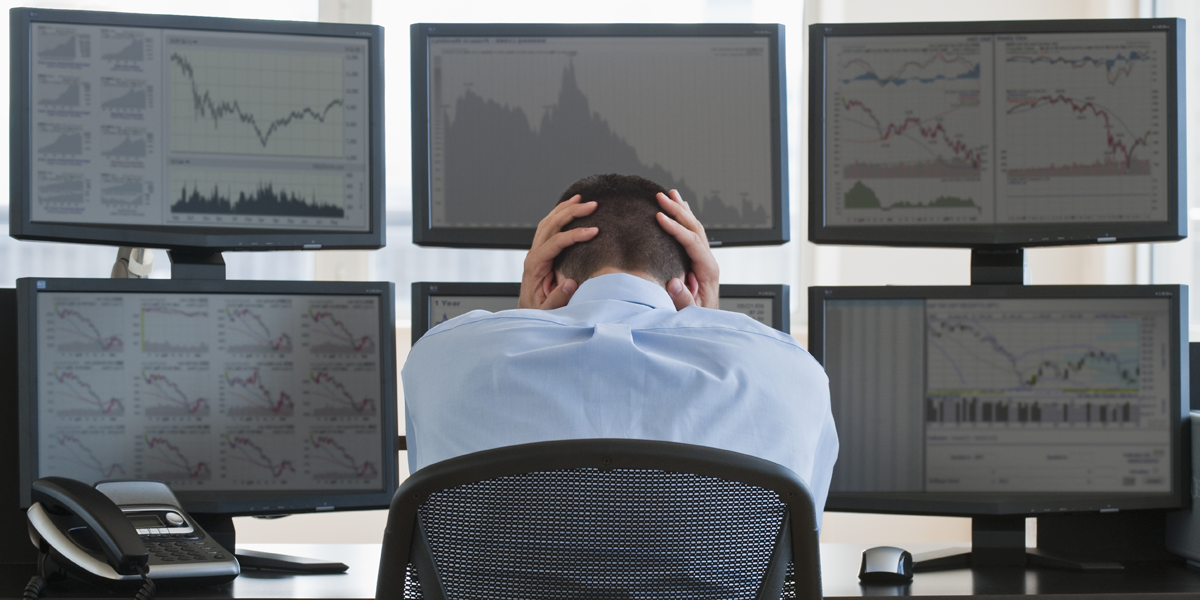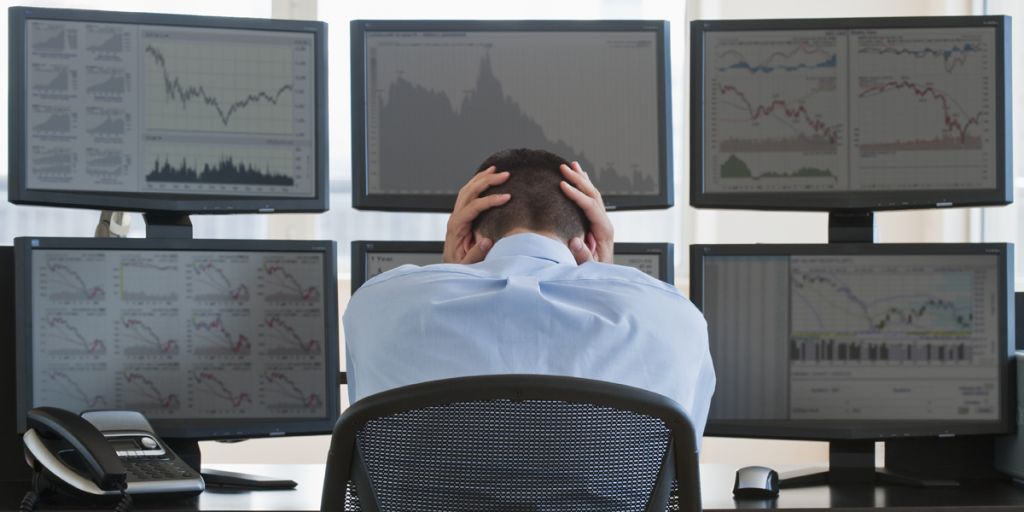
Tetra Images/Getty
- The stock market crash of 1929 was a major stock market crash and was the single worst event in the history of the US.
- The crash was a result of a myriad of factors including investor behavior, weak regulations, and international trade relations.
- The stock market would not recover from the crash until nearly 20 years later.
- Visit Insider's Investing Reference library for more stories.
The stock market crash of 1929 is known as the most catastrophic event in the history of the US stock market. On Thursday, October 24, 1929 the stock market fell 11%. The losses continued on Monday, October 28 when the market fell another 13%. Then what became known as "Black Tuesday," October 29, the market fell another 12% and provided a spark for what would be known as the Great Depression. From that point, the stock market would not bottom out until the summer of 1932 and would not reach the peak of 1929 levels until the 1950s.
In the years preceding the crash, much of the US was in the throes of the "Roaring Twenties." From 1920 to 1929, total wealth in the US more than doubled, and the unemployment rate averaged 3.7%. The economy was in a period of expansion, but consumers and companies were taking on debt and engaged in more speculative financial behavior, setting the stage for the crash and the Great Depression.
What caused the 1929 stock market crash?
The stock market crash of 1929 was not caused by one single factor but a collection of events on the part of investors, regulators, and international relations. Here's a quick rundown on some of the major causes:
- Overconfidence and oversupply: Investors and institutions were piling into the stock market during the early 1920s as the economy expanded. But what went unnoticed by most investors is the fact that many businesses were overproducing and the growth of the stock market did not accurately reflect the business reality at the time as many businesses were selling their goods at a loss.
- Buying on margin: Margin is the practice of taking a loan to buy stocks which can amplify gains and losses. This gave investors more buying power to further inflate prices when the market was up, but put several in debt once the crash began. "Borrowing money from your stock broker back then was a common occurrence, and with as little as 10% down during those times. This 'overconfidence' also extended to industries who overproduced, which led to surpluses, which ultimately drove supply prices and share prices down," says Joshua Lutkemuller, CFA, head of investment strategy at Strongside Asset Management, LLC.
- Bad moves made by the Fed: The Federal Reserve is charged with the job of creating a safe and stable financial system. One way that the Fed accomplishes this is by raising or lowering interest rates. Throughout the 1920s the Fed kept interest rates low and when the crash hit, they actually raised interest rates, which is the opposite of what economists would recommend today, making the situation much worse.
- Bad moves made by Congress: In an effort to increase demand for domestic goods and offset some of the overproduction issues, Congress passed the United States Tariff Act of 1930 also known as the Smoot-Hawley bill. The impact of this bill backfired as multiple countries retaliated with their own tariffs on US goods and imports fell 40%. With demand lacking domestically and now abroad the losses on Wall Street continued.
What are the effects of the 1929 stock market crash?
The stock market would continue to fall through 1932, hitting the bottom at 89% below its peak in 1929 and the Great Depression began. "By 1933, almost half of America's banks had failed and unemployment rates were as low as 30% or 15 million people," Lutkemuller adds.
For African Americans, it was even worse, as approximately half were out of work and racial violence would increase in parts of the South. It wouldn't be until 1954 that the Dow Jones would reach pre-crash levels. In an effort to put the US back on track, a series of moves were made in 1933 under President Franklin D. Roosevelt's New Deal.
The New Deal was an expansive series of programs put in place, with several of the original protections and agencies that are still used today. The New Deal created the Federal Deposit Insurance Corporation (FDIC) to ensure the funds held in US banks up to a certain limit.
It also created the Securities and Exchange Commission (SEC) to protect investors and oversee the stock market. The FDIC was created because as the stock market fell, thousands of people began withdrawing their money from banks. "Banks didn't have adequate reserves to meet these demands, due to the funds being invested in the market. This sent the market into even more of a spiral," adds Lutkemuller.
The financial takeaway
Because the economy and the stock market are linked to so many complex and fluid factors like international relations, consumer behavior, and regulations there was no single cause for the crash. But these factors are even more complex today, due to the rise of cryptocurrencies and investment opportunities and technology. Lutkemuller says that market crashes are not as easy to forecast as you might think. "Hindsight bias is very common when looking back at previous market crashes, but it is very hard to predict in real-time."
It is also important to point out that while buying and holding for the long-term is generally considered solid financial advice today, it may not have been the best idea in the years directly after the crash in 1929. "We have been blessed with an extraordinary bull market the past decade," Lutkemuller said. "But let's not forget that it took almost 25 years for the stock market to fully recover to it's September 1929 peak."










